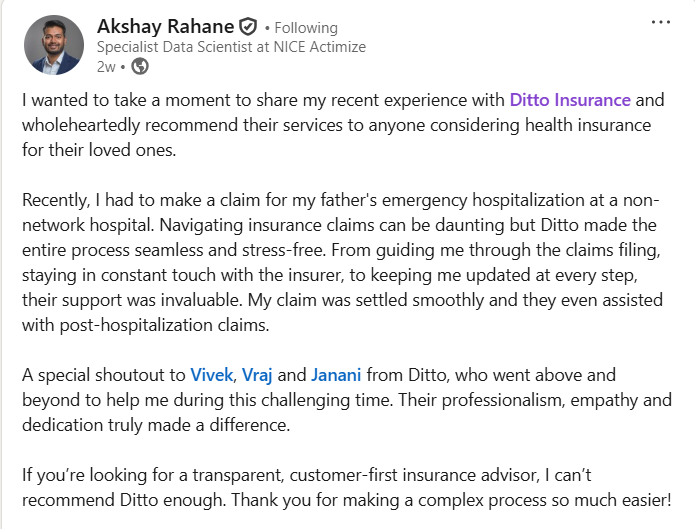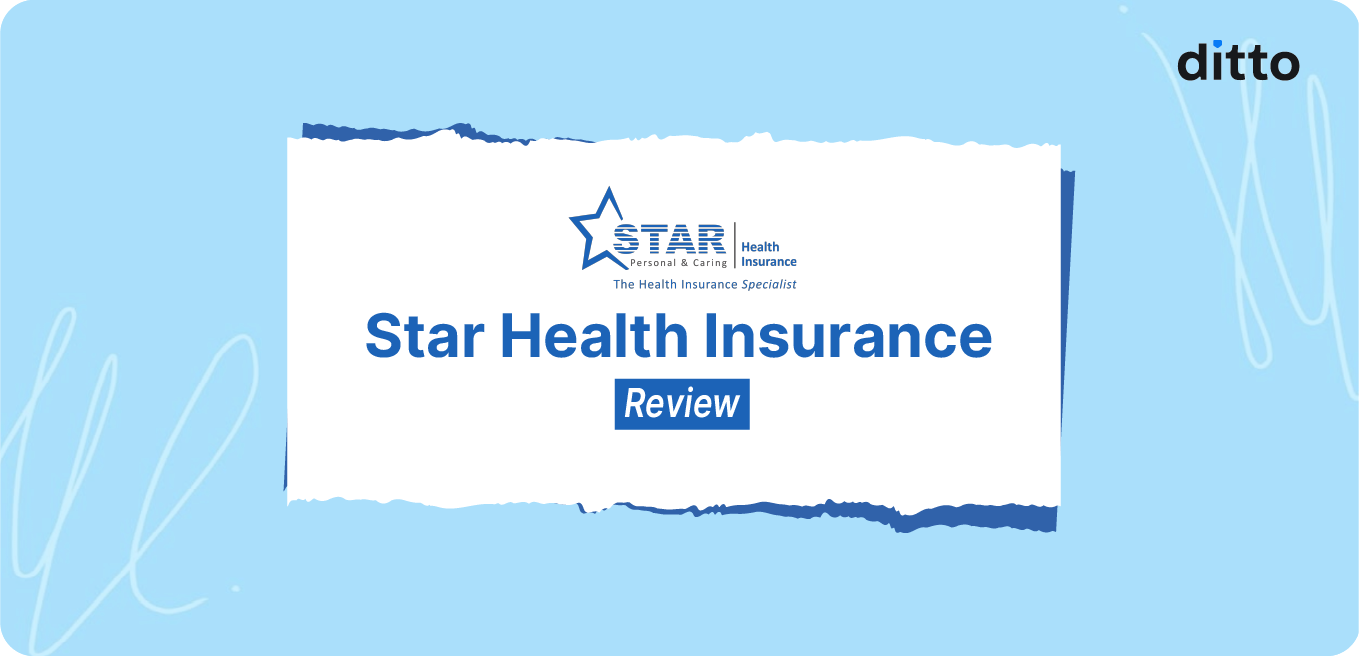Star Health Insurance Review 2025
Star Health Insurance is one of India’s largest standalone health insurers, founded in 2006, and is recognized for its vast hospital network and customizable health plans. It reports an average claim settlement ratio of 85% (FY 2022–25) and an incurred claim ratio of 73% (FY 2022–25), indicating a solid financial footing but slightly lower settlement rates than its top peers.
Its complaint volume is relatively high at 52 per 10,000 claims, reflecting occasional service friction despite fast cashless processing. Star’s flagship and popular offerings include Super Star, Assure, Comprehensive, and Family Health Optima, each aimed at different needs.
Introduction
If you’ve ever searched for health insurance in India, chances are Star Health Insurance popped up more than once, and for good reason. As one of the legacy players, Star has built a strong reputation for its vast hospital network, diverse plan options, and prompt claim settlements.
But how does it really perform in terms of claims, affordability, and customer satisfaction? Here’s a complete breakdown to help you decide whether Star Health is worth your money.
Key Benefits of Star Health Insurance
Affordable Premiums
Healthy ICR
Massive Scale
Vast Hospital Network
Cons of Star Health Insurance
- Below Average CSR: Their claim settlement ratio (CSR) is near 85%, lower than many peers, which may translate into slower payouts or more rejected/partial claims.
- High Complaint Volume & Regulatory Scrutiny: The insurer reported around 52 complaints per 10,000 claims, significantly above the industry median of 17.
- Data & Cybersecurity Concerns: The regulator, Insurance Regulatory and Development Authority of India (IRDAI), fined Star Health ₹3.39 crore for cybersecurity lapses. The company was also linked to a significant data leak exposing the personal information of millions.
Partner Insurer Disclaimer: While Star Health is a partner insurer of Ditto, we generally do not recommend their products based on their comparatively lower CSR and elevated complaint levels.
Looking to buy health insurance? Compare Star Health with other top insurers on Ditto — get unbiased advice, real claim insights, and zero spam. Book a free call today!
Claim Settlement Ratio of Star Health Insurance
The claim settlement ratio (CSR) indicates how efficiently an insurer settles claims; a higher number reflects smoother claim handling.
While slightly below the industry average, Star’s 96% cashless approvals within 3 hours show that when it comes to speed, Star performs exceptionally well. Their marginally lower CSR can be attributed to stricter documentation checks and the large claim volume from their vast customer base.
Incurred Claim Ratio of Star Health Insurance
The Incurred Claim Ratio (ICR) indicates the percentage of the premium collected that is paid out in claims.
At 73%, Star sits comfortably in the “ideal” zone, indicating financial soundness and consistent claim servicing.
Complaint Volume of Star Health Insurance
The complaint volume (CV) measures how many complaints an insurer receives per 10,000 claims.
While this number looks high, it’s essential to view it in context: Star handles one of the highest claim volumes in India (over 25 lakh in FY 2025). Many complaints arise from delays in documentation or network hospital discrepancies, which Star has been addressing through enhanced digital claim tracking and customer grievance redressal systems.
Star Health Insurance: Customer Service & Support
Star Health offers multiple channels for support, including dedicated customer helplines and in-branch grievance cells.
Contact Details: Star Health and Allied Insurance Co. Ltd
Registered Office: No. 1, New Tank Street, Valluvarkottam High Road, Nungambakkam, Chennai 600034
IRDAI Reg. No: 129 | CIN: L66010TN2005PLC056649
Toll-Free Number: 1800-425-2255 / 1800-102-4477
Fax: 044-28260062
Email: info@starhealth.in
Website: www.starhealth.in
Corporate Customer Support: 044-43664666
Customer reviews suggest Star’s call center and branch teams are responsive, though claim documentation processes can feel lengthy at times. Still, their extensive offline presence makes it easier to resolve issues in person.
Best Plans Provided by Star Health Insurance
Star Health Insurance: Premium Comparison
These are first-year premiums for a cover of 15 lakhs (with all necessary riders added) for a 25-year-old male with no pre-existing medical conditions residing in Mumbai. We have used Star’s flagship plan, Star Super Star, for illustration purposes and compared it with three other plans recommended by Ditto.
Note: Some plans, like HDFC ERGO Optima Secure and Care Supreme, may include a 5% discount in the first year.
Why Choose Ditto for your Health Insurance?
At Ditto, we’ve assisted over 8,00,000 customers with choosing the right insurance policy. Why customers like Akshay below love us:

✅No-Spam & No Salesmen
✅Rated 4.9/5 on Google Reviews by 15,000+ happy customers
✅Backed by Zerodha
✅100% Free Consultation
You can book a FREE consultation. Slots are filling up quickly, so be sure to book a call now!
Star Health Insurance Review: Final Thoughts
Star Health offers comprehensive coverage options, a vast hospital network, and expedited cashless approvals, making it a reliable choice for many families. Plans like Super Star and Assure stand out for their flexible add-ons and innovative features. However, the insurer’s claim handling record is inconsistent, with reports of partial settlements and heavy deductions. It also faces problems with offline mis-selling and process delays.
Still, Star Health’s lenient underwriting for pre-existing conditions and strong offline presence make it suitable for high-risk or senior customers. If you’re buying, opt for newer plans like Super Star and always work with an advisor who is experienced in Star claims.
FAQs
Can I reduce waiting periods under Star Health Insurance?
Yes. Several plans allow you to reduce the pre-existing disease (PED) waiting period from 3 years to 1 year through a paid add-on.
Are all daycare procedures covered under Star Health Insurance?
Yes, all plans cover daycare treatments that require less than 24 hours of hospitalization.
Does Star Health offer lifetime renewability?
Absolutely. All Star Health plans offer lifelong renewability with no age limit for exit.
How long does Star take to settle claims?
96% of cashless claims are approved within three hours, making it one of the fastest claim processes in the industry.
Does Star Health Insurance use TPAs or does it have an in-house claims team?
Star Health does not use Third-Party Administrators (TPAs) because it has its own in-house claims team that manages the entire process directly. Based on Ditto’s experience, this setup generally leads to faster resolutions and better accountability, as customers interact with the insurer’s team instead of an external agency. However, the overall experience can still vary by hospital and region.
Last updated on:










